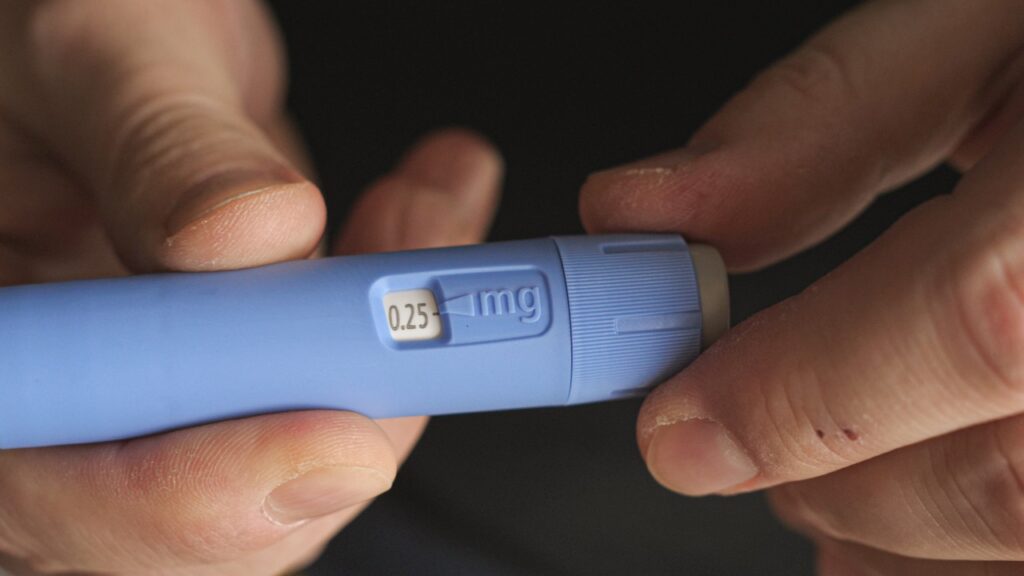Ozempic, also known by its generic name semaglutide, is a medication that requires a prescription and is primarily administered via injection. It is utilized to control type 2 diabetes and prevent cardiovascular diseases. As a glucagon-like peptide-1 (GLP-1) receptor agonist, Ozempic enhances blood sugar regulation and diminishes heart-related complications.
In this article, we will delve into:
– The uses of Ozempic
– The advantages of this drug
– The reasons why Ozempic might be prescribed to you
– The potential side effects of this drug
– A guide to understanding the dosages of Ozempic
– The method of administering Ozempic
– Individuals who should avoid Ozempic
– The long-term effects of Ozempic
– Frequently asked questions.
Before starting any prescription medication, it’s crucial to consult with your healthcare team to determine if the treatment is suitable for you.
What Is Ozempic Used For?
Ozempic is the brand name for the medical compound semaglutide, manufactured by Novo Nordisk. This prescription medication, approved by Health Canada and the FDA in the U.S., is designed to enhance blood sugar control and lower A1C levels in individuals with type 2 diabetes. Additionally, it helps reduce the risk of cardiovascular events in adults with known heart disease.
If you’re already undergoing treatment for type 2 diabetes, you might be familiar with A1C levels. These levels indicate the percentage of your blood cells that contain sugar-coated hemoglobin, providing a measure of the amount of sugar bound to your hemoglobin. Essentially, Ozempic is utilized to manage elevated blood sugar levels in individuals with type 2 diabetes.
What Are the Benefits of Ozempic?
The primary advantage of Ozempic lies in its ability to manage blood sugar levels. However, it also significantly reduces the risk of cardiovascular events, including strokes, heart attacks, and death, in type 2 diabetics with existing heart problems. Additionally, studies have shown that it can aid in weight management.
Weight Loss Benefits of Ozempic
It’s crucial to understand that Ozempic is not a weight loss drug and is not approved as such, except in certain cases where your BMI exceeds 27. However, when combined with lifestyle changes, such as regular exercise, a healthy diet, and behavioral therapy, you may experience some benefits.
Compared to a variety of similar medications, Ozempic produced significantly larger weight loss effects in studies and clinical trials conducted on samples of around 1,000 adults with type 2 diabetes.
However, the primary purpose of this medication is to treat and manage blood sugar levels, or other risk factors as indicated by your medical team.
It’s important to remember that weight loss is not an intended effect of Ozempic’s use, and it should not be taken solely for this off-label use.
Why Would I Be Prescribed Ozempic?
The prescription instructions for Ozempic indicate that the drug is prescribed as a supplementary treatment to other non-medicated methods of treating type 2 diabetes, such as exercise and dietary changes. It is also prescribed to reduce the risk of cardiovascular events in people with type 2 diabetes mellitus and pre-existing heart conditions.
Your medical team may prescribe Ozempic to assist existing blood sugar regulation measures, such as insulin, or as a main blood sugar treatment in itself.
If you are planning to have children or are actively trying to conceive, you should discuss with your medical team whether you should take or continue taking Ozempic, as the effects of Ozempic on unborn babies have not yet been studied.
Make sure to inform your medical team about all other medications you are taking, including vitamins, mineral supplements, and other medications to avoid any possible negative interactions.
What Are the Potential Side Effects of Taking Ozempic?
Like any medication, Ozempic has a list of potential side effects and risks that it’s useful to be aware of.
The most common side effects include:
– Nausea
– Abdominal (stomach) pain
– Constipation
– Diarrhea
– Vomiting.
However, Ozempic also has the potential to cause further serious side effects, including:
– Pancreatitis (inflammation of the pancreas): This is typically first noticed as severe and persistent abdominal pain, and can also be felt as pain in the back.
– Vision changes
– Low blood sugar: As Ozempic is designed to treat blood sugar, taking too much of it (or taking it in combination with another blood sugar treatment, such as insulin or sulfonylurea) can cause low blood sugar, or hypoglycemia. Typically, this manifests as lightheadedness, headache, blurry vision, slurred speech, and mood changes.
– Kidney failure: Other side effects such as diarrhea and vomiting may exacerbate any existing kidney issues, leading to these worsening significantly.
– Allergic reaction and anaphylaxis: If you notice signs of serious allergic reactions such as swelling of lips, tongue, or face, difficulty breathing, severe rash, or rapid heartbeat, call an ambulance immediately.
– Gallbladder issues: These typically manifest as pain in the upper stomach/abdomen, fever, clay-colored stools, or jaundice (yellowed skin and eyes).
Ozempic is a form of semaglutide, a compound that has been observed to cause thyroid cancer in rats. While there is no coherent data yet on whether semaglutide causes or accelerates the growth of thyroid tumors in humans, prolonged usage of the medication could elevate the risk.
If you notice a lump or swelling in your neck, hoarseness, shortness of breath, or trouble swallowing, inform your medical team immediately, as these may indicate the development of thyroid cancer.
Always inform your healthcare professionals if you experience any sudden changes after starting a new medication. You should be especially sure to contact your medical team promptly if you experience any of the more severe side effects listed above.
Understanding Ozempic Dosages
Ozempic can be prescribed in several dosage sizes depending on your medical provider’s assessment of your needs. It is typically taken as an injection once a week, regardless of dose quantity.
Pen Dose Strength
Ozempic doses are taken by pen injection. If you’re familiar with an EpiPen, the method of administration is similar.
Pens come in four different strengths: 0.25 mg, 0.5 mg, 1 mg, and 2 mg.
The 0.25 mg dose is not effective at treating blood sugar levels, and is only administered to monitor uptake of the medication during the early phases of its use.
0.5 mg is the lowest full dosage, while 2 mg weekly is the maximum recommended dose.
You’ll only be upped from the 0.5 mg dose if it is determined that a higher dose is required to manage your blood sugar levels.
How Much Ozempic Can I Take?
You shouldn’t take more than 2 mg of Ozempic per week, and should always defer to your healthcare professional’s instructions as to how much you are taking per week.
Typically, you will be taking either 0.5 mg or 1 mg once per week after you have begun the medication in earnest.
What Happens if I Take Too Much Ozempic?
Ozempic is a drug that is designed to control blood sugar levels. As a result, if you take too much, you may become hypoglycemic.
If you take too much Ozempic, or are experiencing symptoms of hypoglycemia after a regular dose, call your medical team, or go to the nearest hospital immediately.
To avoid taking too much Ozempic, ensure that you are following your medical team’s advice as to how and when you should take the medication.
In general, you should not be taking Ozempic doses more than once a week, and you should have at least 48 hours between doses.
Can I Miss a Dose of Ozempic?
While you should be aiming to take Ozempic regularly, it’s possible, as with any medication, for you to forget and miss a dose.
Luckily, it’s okay to administer a make-up dose of Ozempic up to five days after a missed dose.
If you miss this five day window, you should instead resume your regular Ozempic doses from your next scheduled day (ie, not make up the missed injection).
How to Inject Ozempic
Ozempic is injected subcutaneously (under the skin). You should inject it in your abdomen, thigh, or upper arm, being careful to avoid injection into a muscle or vein.
Additionally, you should vary or rotate the injection site each time you take a dose, whether that’s between areas or using different sites within the same general injection area.
Full instructions for the injection of Ozempic can be found on the manufacturer’s website, but for ease a short summary is provided below:
- Confirm that you are using an Ozempic pen and that the medicine is clear and colorless.
- Attach a new needle every dose.
- Check that you have selected the correct dosage amount (this is especially important for the red-label pen, which can deliver both 0.25 mg and 0.5 mg doses). Ensure that the medication is flowing correctly in the pen.
- Insert the needle in your chosen site and press and hold the dosage button. When you see the dose counter drop to zero, count to six before removing the pen.
- Make sure to dispose of the needle appropriately in a sharps bin.
Who Should Not Take Ozempic?
Ozempic is not intended for any of the following:
– Treatment of type 1 diabetes
– Patients with previous record of hypersensitivity or allergy to semaglutide, or any other component of Ozempic
– Patients with a family history of medullary thyroid carcinoma
– Patients with multiple endocrine neoplasia syndrome (type 2).
Ozempic has not been studied for use in patients with pancreatitis. As the medication can cause pancreatitis as a side-effect, the manufacturer recommends that other antidiabetic treatments be considered instead where possible to minimize risk.
Understanding the Long-Term Effects of Ozempic
Like any blood sugar regulator, Ozempic can have long-term effects.
In particular, long-term use of semaglutide glucose control in people with diabetic retinopathy has not yet been sufficiently studied.
If you have this condition, you should actively consult your medical team about whether long-term use of the drug is right for you.
You may also develop anti-semaglutide antibodies over the treatment period, leading to reduced effectiveness of Ozempic and other semaglutide-based drugs.
Key Takeaways
Ozempic is an effective antidiabetic medication for use in treatment of blood sugar levels and management of cardiovascular risk in patients with type 2 diabetes. It can also be beneficial in weight management, although it is not intended for use as a weight-loss drug.
You should contact your health provider for further information and support about the use of Ozempic and whether it is right for you. Bear in mind that Ozempic is a prescription-only medication in Canada, so you’ll need to consult with your health provider before use, anyway.
Be sure to consider any prior conditions that may impact your eligibility, and whether it is necessary to switch from (or take Ozempic in addition to) any antidiabetic medication you are currently taking.
Ozempic FAQs
What to know before taking Ozempic?
Ozempic is targeted exclusively at type 2 diabetes and is intended primarily to regulate blood sugar. It can have serious side effects, and you should avoid taking it if you have a family history of medullary thyroid carcinoma, or if you have multiple endocrine neoplasia syndrome (type 2).
Although there have been recent news articles about Ozempic’s potential in helping with weight management, this is an off-label use and should not be a reason to seek treatment with the drug.
Do you lose fat or muscle on Ozempic?
Ozempic can assist with weight management over the course of your treatment. However, that doesn’t necessarily mean that it’s “good weight loss”.
For more information on Ozempic, you can visit the following page https://cover.health/weight-loss/
What should I avoid while taking Ozempic?
You should be cautious if you are aiming to have a child or are breastfeeding, as there is limited data around whether Ozempic is safe for unborn children or infants in these scenarios.
Only change your diet or exercise plans after you’ve consulted with your medical team and/or a Registered Dietitian. They’ll be able to assist in determining if changes need to occur to your diet and activity levels if you are prescribed the medication.
Do not share needles with another patient even if you are on the same dose of Ozempic, as this can lead to serious infection, disease, or death.






